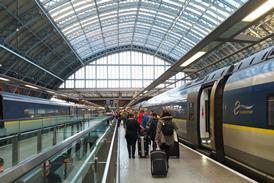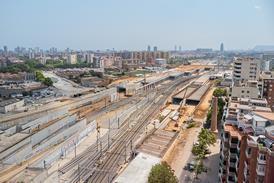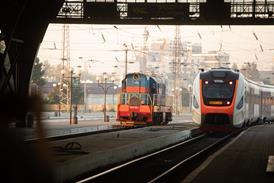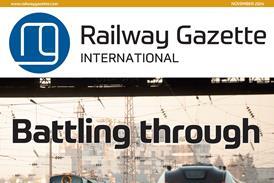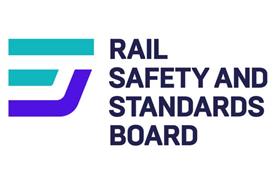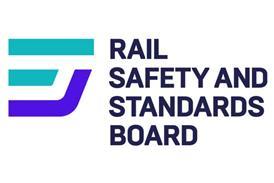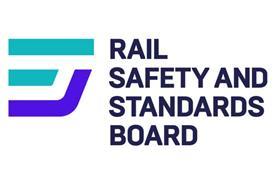INTRO: Joachim Gaissert, Executive Vice President of Adtranz, discusses with Murray Hughes the implications of his company’s move to a sales and production policy based on ’modular product platforms’
COMING from the car and trucking giant Mercedes-Benz, Joachim Gaissert ’did not use trains’. He does now, and is as critical as any railway professional. He has seen a lot of the business since he was appointed Executive Vice President of Adtranz in January 1996, but he has not always been impressed. His comment that ’frankly, this industry is not performing well’, indicates a belief that far-reaching change is needed. He has been instrumental in bringing about that change at Adtranz, and he expects major benefits to follow for both his company and its customers.
Asked about the concept of modular product platforms (below), Gaissert looks back to the time when the EU put the Adtranz merger on hold for six months while monopolies implications were investigated. ’We used that time to work in teams - it was the best invested time we ever had.’
Gaissert says it was then that ’we defined the basic structure, and we defined the problems too.’ His management team brought in specialist business expertise from the aeronautics and car industries, where ’similar structures had been in place for many years’.
Giving his impressions of the railway industry, he was surprised ’to see that the railway people are really in love with the technology’, which in practice meant that ’the operators were driving the industry and not the suppliers.’ In the past this ’allowed a customer to introduce changes when we were already about to deliver.’ He believes that customers can no longer afford the high cost of products incorporating changes like this.
The problem is illustrated by what Gaissert calls ’quality costs’. By this he means the extra cost of delivering products late and having to rebuild or re-engineer them before they work properly. This cost, he says, is running at about 15% of the capital cost, whereas in the car industry it is about 1%. He says ’it needs to be below 5% - if we can do this, we will be a profitable business.’
The launch of the MPPs follows ’nearly two years of hard work to bring people together using totally new processes for this industry.’ It needed ’a hell of a structural process’ as the company sought to define where flexibility was needed and where standardisation would bring benefits. ’People in this industry are quite good, but they need a structured approach’, was how Gaissert put it.
An intelligent start
One of the key objectives was to free engineers from traditions so that they could ’start out intelligently’. Gaissert said the MPP concept hinges on the development of ’clear interfaces so that we don’t need to change the whole vehicle to meet customers’ demands.’ It is a process that has been ’used in the car industry for decades’, and ’incorporating techniques from other industries is now much easier than in the past’.
Asked about the prime purpose of the MPPs, Gaissert says that ’we understand when we go into a tender that we can actively present something to a customer. It is like a catalogue from which he can choose. If he really has a special requirement, then we can say that it has this and this impact; we are in a much more responsive position.’
Given the short history of Adtranz, with the potential clash of many languages and cultures - and a history of hard-fought competition - the MPPs also give all parts of the company a common strategic objective. This should help in the drive to give a fast response time, although Gaissert is already confident that ’we are faster than everyone else in the industry.’
Driving down costs
Challenged to explain how costs would come down if Adtranz continued to offer rolling stock designs outside the MPPs, Gaissert said that the highest share of costs is attached to ’front-end design’. Production costs were not the decisive factor - the aim is ’to make production so simple that anyone can do it’, with final assembly being carried out locally if a customer requires.
Gaissert believes that the market is already forcing customers towards accepting products that are ’off-the-shelf’ but which can be adapted simply to customers’ needs, in the same way that a Boeing 777 can be customised for different airlines.
Costs will also be cut by concentrating design and production - for example only two plants, in Derby, Britain, and Siegen, Germany, will supply the rest of Adtranz with bogies.
To encourage Adtranz factories for systems and components to be competitive and efficient, Gaissert has set them targets of selling 10 to 20% of turnover to third parties outside the main consortia - ’then we know they are competitive; we are forcing them out into the market.’
Quizzed on how much the switch to MPPs would save, Gaissert says ’we have to achieve cost reductions of between 10 and 30%, and we have to be open for further decreases. This is why we have begun product migration - you only achieve a big cost reduction by introducing new technologies.’
He used the transversal flux traction motor as an example - it avoids the need for mechanical gears and can reduce costs by 30%. A prototype ’is now in the laboratory and the aim is to have a prototype installed on a light rail vehicle this year - we are starting with low-end technology.’
More MPPs to come
The seven MPPs do not represent the full range of Adtranz modular products. Other product platforms are being developed, and Gaissert says that ’there is more in the pipeline, but the short-term focus is on implementing the new approach in tenders and orders.’
To the suggestion that names such as Turbostar and Electrostar would vanish from the Adtranz vocabulary, Gaissert replied that the MPPs would not eclipse local names. ’Everyone needs an identity’, he says, suggesting that he wanted to be rid of ’Class XYZ and so on, which has no identity from a supplier’s point of view.’ Citing the Blue Tiger diesel locomotives under construction for Pakistan, he felt ’it was good to have an emotional name - you have to understand the emotions of the first and the end customer.’ o
CAPTION: On March 17 Adtranz Executive Vice President Joachim Gaissert launched the first train in the Crusaris modular product platform - Norwegian State Railways’ Gardermobanen Airport Express
CAPTION: Adtranz anticipates significant growth in the Asia-Pacific market, and has opened a Group Corporate Centre in Singapore. This X2000 demonstrator is scheduled to run on China’s Guangshen Railway for the next two years
Seven solutions in search of a market
The Adtranz business strategy launched on March 16 is based on seven ’Modular Product Platforms’ which will initially complement rather than replace existing products. The MPPs are designed around advanced interfaces and modularity to offer flexibility in meeting individual customers’ demands.
Innovia peoplemovers build on the successful AEG CX-100 range, whilst the Incentro LRVs are derived from the Variotram and Eurotram designs. Movia metro trainsets incorporate the Stockholm C20 concept, whilst the Itino regional multiple-units draw on the Flexliner family. The Crusaris inter-city multiple-units echo the Gardermoen trains, derived from the X2000; and Octeon electric locos build on German Railway’s latest designs. The Blue Tiger diesel locos harness the existing Adtranz/General Electric joint venture.

